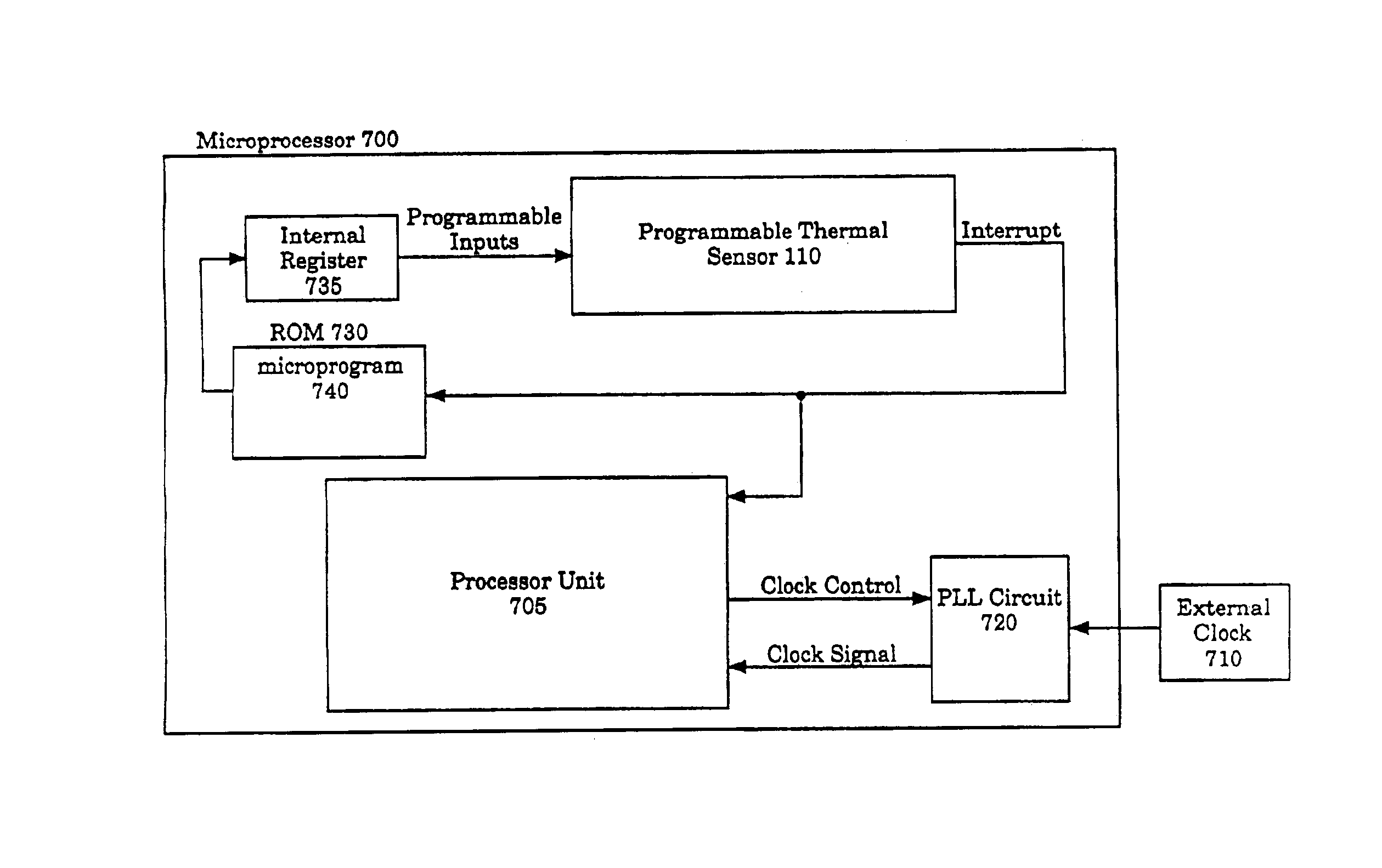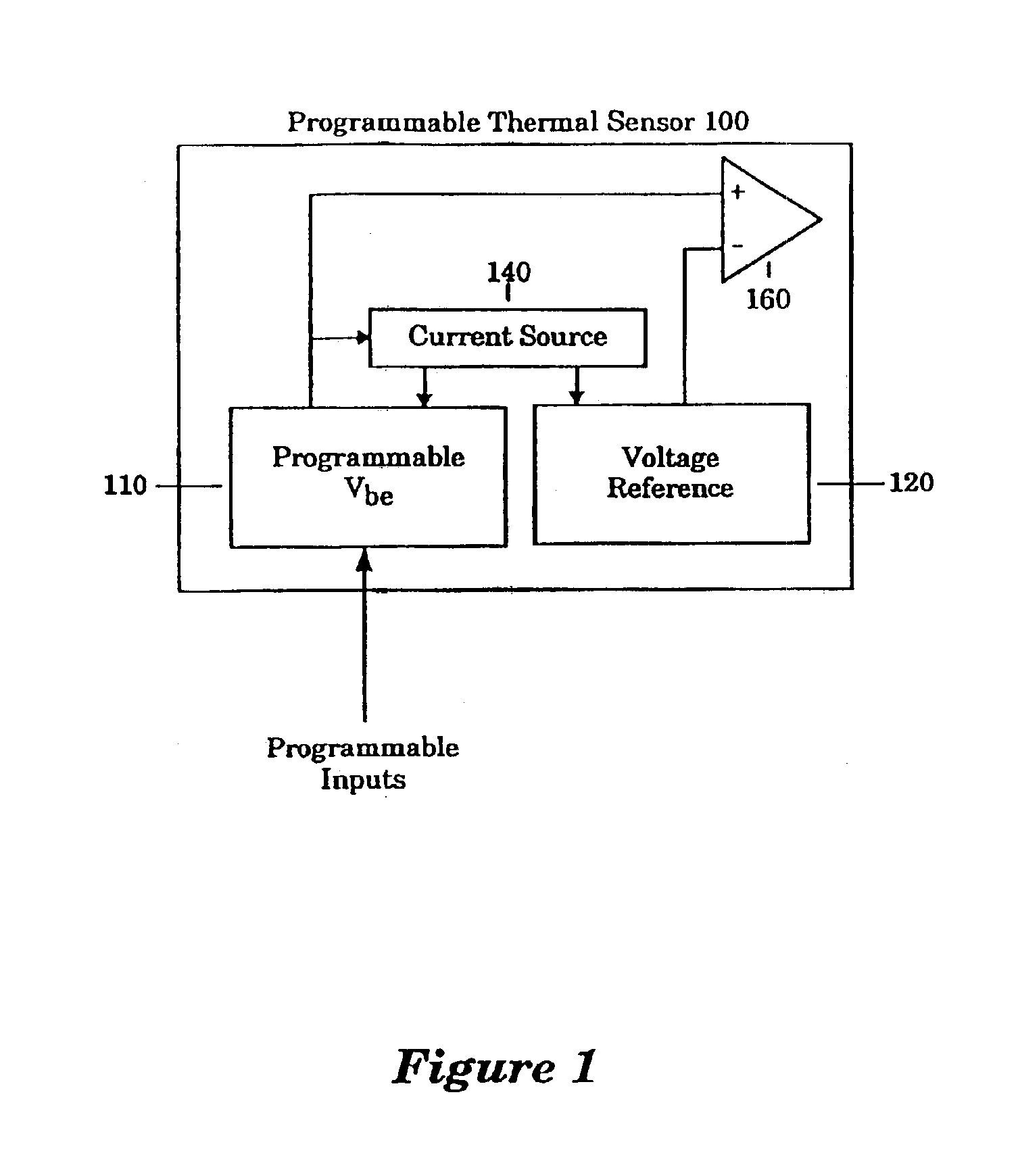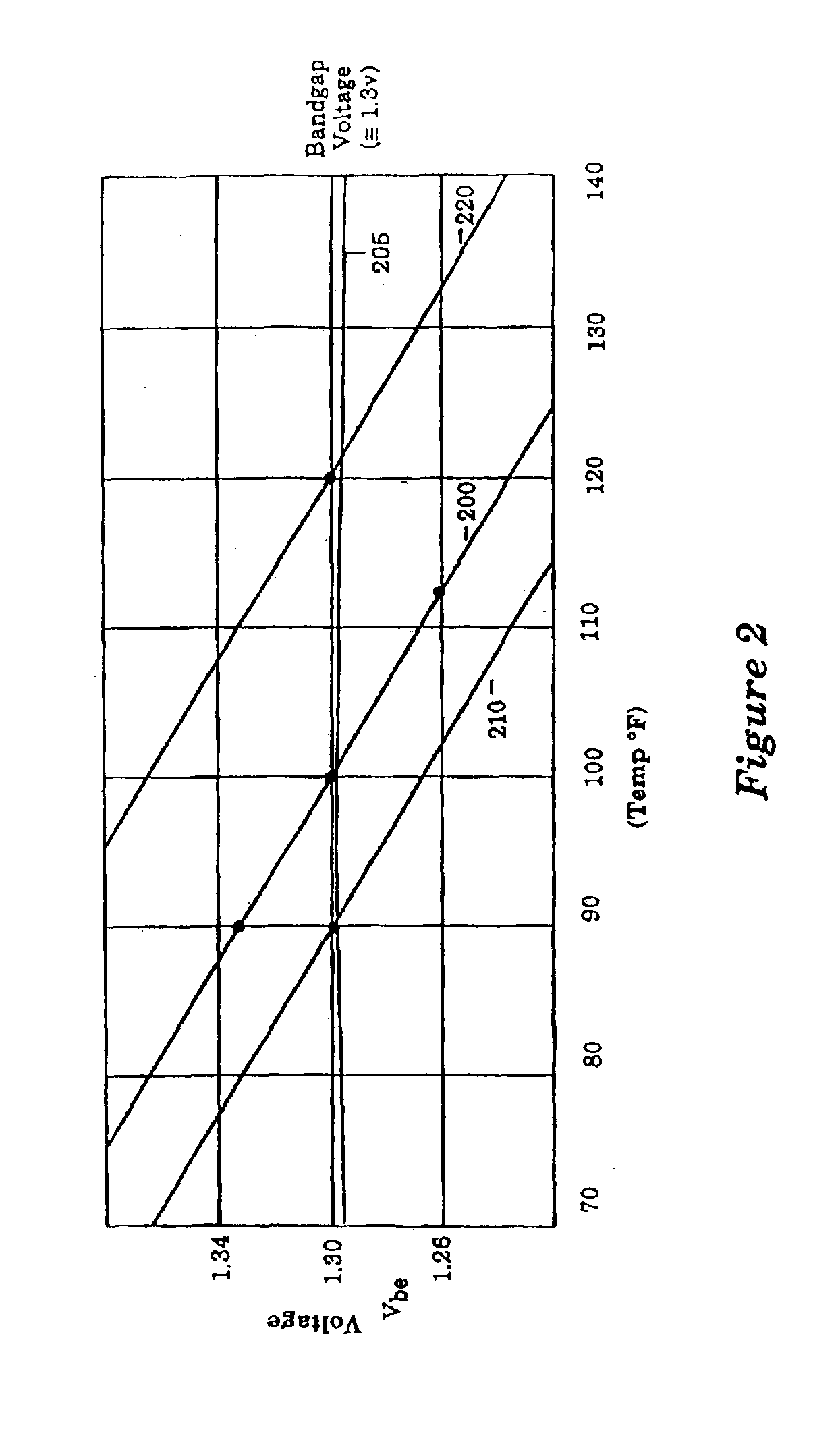Temperature-based cooling device controller apparatus and method
a controller and temperature-based technology, applied in the field of thermoelectric sensing, can solve problems such as the halting of the system clock operation, and achieve the effects of increasing the system clock frequency, and reducing the clock frequency
- Summary
- Abstract
- Description
- Claims
- Application Information
AI Technical Summary
Benefits of technology
Problems solved by technology
Method used
Image
Examples
first embodiment
[0045]Referring to FIG. 7, a microprocessor incorporating a programmable thermal sensor configured in accordance with the present invention is illustrated. A microprocessor 700 contains, in part, the programmable thermal sensor 100 and a processor unit 705. The processor unit 705 is intended to present a broad category of microprocessor circuits comprising a wide range of microprocessor functions. In general, the programmable thermal sensor 100 is programmed to detect a threshold temperature within the microprocessor 100. If the microprocessor 700 attains the pre-programmed threshold temperature, the programmable thermal sensor 100 generates an interrupt. As described above, the programmable thermal sensor 100 detects the pre-programmed threshold temperature based on the temperature of the integrated circuit at the programmable thermal sensor 100. The temperature across a microprocessor die can vary as much as 8° F. In a preferred embodiment of the present invention, the programmabl...
second embodiment
[0052]Referring to FIG. 9, a block diagram of a programmable thermal sensor system configured in accordance with the present invention is illustrated. A microprocessor 900 comprises, in part, a programmable thermal sensor 110 and a processor unit 905. The programmable thermal sensor 110 is configured as described above. The programmable thermal sensor 110 is connected to a ROM 910 and an internal register 920. The programmable thermal sensor 110 is also coupled to external sensor logic 940. The external sensor logic 940 is coupled to a counter 950 and an active cooling device 955. An external clock 945 is input to a counter 950, and the output of the counter 950 is input to a clock circuit 930. The clock circuit 930 buffers the input clock frequency to generate the microprocessor clock for the processor unit 905. In operation, a microprogram 915, stored in ROM 910, sets the internal register 920 to an initial threshold temperature value. If the temperature of the microprocessor 900 ...
PUM
 Login to View More
Login to View More Abstract
Description
Claims
Application Information
 Login to View More
Login to View More - R&D
- Intellectual Property
- Life Sciences
- Materials
- Tech Scout
- Unparalleled Data Quality
- Higher Quality Content
- 60% Fewer Hallucinations
Browse by: Latest US Patents, China's latest patents, Technical Efficacy Thesaurus, Application Domain, Technology Topic, Popular Technical Reports.
© 2025 PatSnap. All rights reserved.Legal|Privacy policy|Modern Slavery Act Transparency Statement|Sitemap|About US| Contact US: help@patsnap.com



